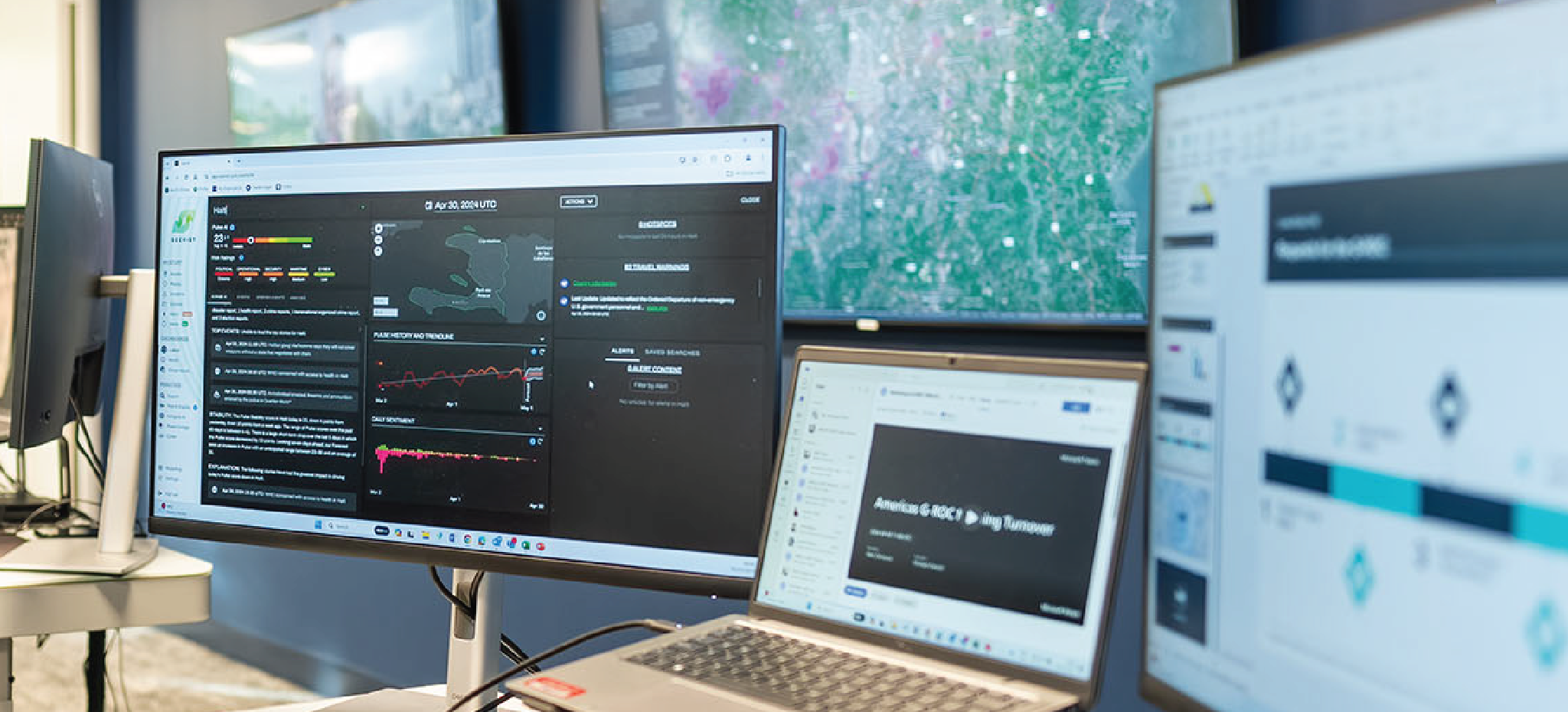Recognizing the demanding nature of the Security Operations Center (SOC) environment, it’s important to acknowledge the unique challenges faced by the team. A recent study sheds light on the significant stressors experienced by SOC professionals. According to the findings, the most prevalent issues include information overload (70%), resource constraints (58%), and the difficulty in distilling actionable intelligence (56%). It’s evident that SOC teams are tasked with a complex mission of rapidly processing and acting upon vast amounts of data while navigating budget limitations. These insights highlight the formidable pressure inherent in safeguarding organizations within today’s intricate threat landscape. Successful security leaders overcome these obstacles by leveraging the best risk management software available to them.
These technologies operate around the clock increasing situational awareness across all areas of operation, sort through vast amounts of data to surface relevant and actionable information, contextualize risk, and proactively prevent problems before they can occur. Selecting the best risk management software is a critical strategic decision for any organization. In this blog, we explore the key features and capabilities security teams should look for when choosing a technology partner to bolster their Security Operations Center (SOC).
Best Risk Management Software: 10 Critical Features
Forecasting Analytics
Advanced algorithms can see patterns within large datasets, leveraging current trends and historical data to mitigate potential threats and risks. This critical feature empowers organizations to transition from reactive to proactive security postures by supporting strategic planning that anticipates threats before they materialize.
Intelligence Gathering
Today’s threat intelligence platforms continuously ingest data from a wide array of sources such as local news, government reports, social media chatter, and other open-source intelligence, all of which present information in different formats. The best risk management software normalizes it into a common format that various internal stakeholders can understand, compare, and apply. This supports the swift identification and assessment of emerging threats and ensures agile, dynamic responses.
Verified Data
Information should originate from a well-rounded variety of sources including local and non-Western options where appropriate, then confirmed for accuracy. This validation process guarantees that the intelligence you send up the chain of command is credible and reliable so decisions can be made with confidence.
Advanced AI and Machine Learning
Your platform should be able to use Artificial Intelligence (AI) and Machine Learning (ML) to process extensive data volumes at speeds that human analysts can’t match. It identifies patterns and connections in the information, extracting actionable insights and significantly boosting the software’s forecasting capabilities. Additionally, AI and ML supports advanced sentiment analysis, allowing for a more nuanced understanding of public sentiment and its potential impact on security threats. By automating these tasks, the technology enables security teams to dedicate their efforts to more complex and strategic analyses, boosting efficiency and elevating overall SOC effectiveness.
Hybrid Machine/Human Analysis
The best risk management software seamlessly blends computational power with the nuanced understanding of human analysts for the most accurate and insightful interpretations of data. Humans bring critical thinking and deep professional experience to the table, essential for providing context and understanding.
Customizable Alerts, Dashboards, and Reporting
Make sure that any platform you consider meets the diverse needs of different users with tailored intelligence alerts, dashboards, and reports. This customization will highlight and present relevant information according to the specific locations and responsibilities of various team members, facilitating a more efficient and effective response to threats and risks.
In-Depth Historical Analysis
A quality risk management platform will provide robust tools for examining intelligence from a historical context, accessing past data to track how similar events or trends have developed over time and offering insights into their evolution and potential future directions. Software with this feature will better prepare your SOC to mitigate future risks.
Enhanced Granularity of Data with Multifaceted Filters
Opt for a platform that delivers precise geographical data, down to the county or city level. You should be able to apply filters and segment data according to criteria including type of event, risk level, and time frame. Enriched by these detailed filters, data should then be visually represented on maps to offer users an intuitive and comprehensive view of threats and trends within specific locales.
Collaboration Tools
When collaboration tools such as shared dashboards or alert systems are built-in, threat and risk intelligence platforms enable SOC team members to work together more effectively. These features streamline communication and coordination, ensuring that everyone is informed and can contribute to the decision-making process according to their role.
User-Friendly Interface
Threat and risk intelligence platforms are built on complex and sophisticated software. Even so, your choice should offer an intuitive, user-friendly interface so that every team member can leverage its full potential without extensive training.
How to Boost Security Center Effectiveness with the Best Risk Management Software
The key to boosting SOC effectiveness lies in adopting a comprehensive threat and risk intelligence platform that delivers the exhaustive capabilities outlined in this blog.
An advanced, fully featured risk management solution will serve as the command center for your security operations, providing continuous, 360-degree visibility and situational awareness. By automatically aggregating and analyzing intelligence from myriad global sources, applying powerful AI and machine learning with expert human analysis, these platforms empower security teams to anticipate emerging threats, make data-driven decisions, and proactively prevent incidents before they can impact the organization.
With features like customizable alerting, granular data filtering, collaborative workflow tools, and an intuitive user experience, the best risk management software will seamlessly integrate into your existing security infrastructure and empower your entire SOC to operate at peak efficiency and effectiveness.
If you’re ready to take your security operations to the next level and safeguard your organization against the increasingly complex threat landscape, request a demo of Seerist today to see how our industry-leading threat and risk intelligence platform can transform your SOC.






